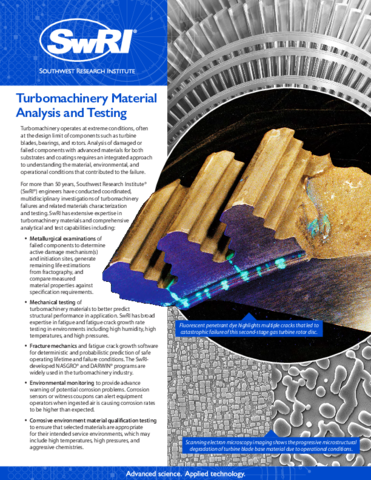We have extensive experience in the development and application of advanced methods for component life prediction and predicting the probabilistic response and reliability of engineered systems. Many of these are available as licensable software tools with user-friendly graphical user interfaces. Major companies around the world use these software tools to analyze material and structural integrity and reliability.
NESSUS® is a modular computer software system for performing probabilistic analysis of structural/mechanical components and systems. NESSUS combines state-of-the-art probabilistic algorithms with general-purpose numerical analysis methods to compute the probabilistic response and reliability of engineered systems. Uncertainty in loading, material properties, geometry, boundary conditions, and initial conditions can be simulated. Many deterministic modeling tools can be used such as finite element, boundary element, hydrocodes, and user-defined subroutines. NESSUS offers a wide range of capabilities, a graphical user interface, and is verified using hundreds of test problems. NESSUS received an R&D 100 Award in 2004.
DARWIN® calculates the probability of fracture of gas turbine engine components and other highly stressed mechanical systems by integrating 2D and 3D finite element models and stress analysis results, fatigue crack formation and growth analyses, material anomaly data, probability of anomaly detection, and inspection schedules. Specialized analysis modes include hard alpha anomalies in titanium rotors, materials with large numbers of inherent anomalies, and surface damage in all rotor materials. The software also indicates the regions of the component most likely to fracture, and the risk reduction associated with single and multiple inspections. DARWIN received an R&D 100 Award in 2000.
NASGRO® is a suite of fracture mechanics and fatigue crack growth analysis computer programs that perform assessments of structural life, compute stress intensity factors, and process and store fatigue crack growth properties. Working closely with NASA and industry, SwRI releases new versions of NASGRO annually with many new features. Recent enhancements include many new K solutions, residual stress capabilities, increased speed, new GUIs, residual strength diagrams, spectrum editing, temperature effects, cyclic shakedown models, cycle counting algorithms, and a revised material database. NASGRO received an R&D 100 Award in 2003 and the NASA Software of the Year award in 2003.
FlawPRO™ is a computer program developed and validated by SwRI against full-scale pipe test data as part of a Joint Industry Program (JIP) titled Validation of a Methodology for Assessing Defect Tolerance of Welded Reeled Risers and Flowlines that involved major companies in the offshore industry, including four oil companies, a pipe manufacturer, and a pipeline installer. Although designed to perform engineering critical assessment (ECA) for pipes subjected to high strain when installed by the reeling process, FlawPRO can also perform ECA for conventionally installed pipes. FlawPRO has been used to perform ECA to derive acceptable flaw sizes in support of offshore projects involving pipes installed by the reeling process and using conventional installation methods.


